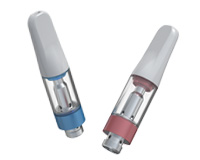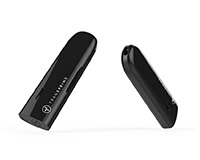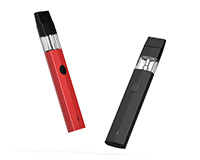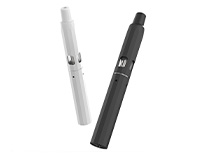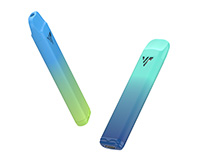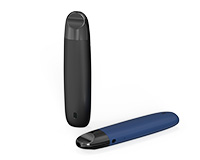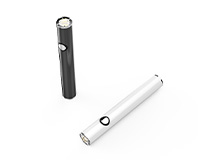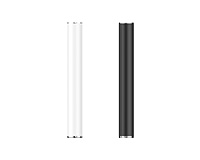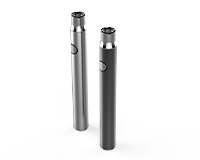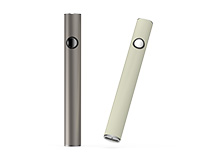Choosing the Right Mouthpiece: Comparing Plastic, Ceramic, and Wooden THC Cartridge Tips
When it comes to THC vape cartridges, most people focus on the oil, coil, or voltage settings. But one often-overlooked component can make a surprising difference in your vaping experience: the mouthpiece.
The mouthpiece is the part you interact with most directly. It’s where you draw each puff, and it’s your tactile connection to the cartridge. While the internal technology powers flavor and vapor production, the mouthpiece shapes the feel, hygiene, and overall comfort of the vape.
In today’s market, the most commonly used materials for THC cartridge mouthpieces are plastic, ceramic, and wood. Each one offers its own blend of aesthetics, functionality, and user experience. Whether you’re a brand looking to position your cartridge or a consumer seeking the perfect puff, understanding these differences can help you make smarter choices.
1. Plastic Mouthpieces
Unlike cheap generic plastic, premium plastic mouthpieces are crafted from heat-resistant and medical-grade materials like polycarbonate (PC), PCTG, or ABS. These plastics are engineered to be more durable, smoother in finish, and safer for inhalation use.
Pros:
Durable and Impact-Resistant: The primary advantage of high-grade plastic mouthpieces lies in their exceptional durability and resistance to breakage. Unlike more fragile materials, plastic mouthpieces can withstand drops, impacts, and general handling without cracking or shattering. This durability makes them ideal for users who are frequently on the go or those who prefer a low-maintenance vaping experience.
Cost-Effective Yet Quality: Cost-effectiveness represents another significant benefit. Plastic mouthpieces are considerably less expensive to manufacture than their ceramic or wooden counterparts, making cartridges with plastic mouthpieces more accessible to budget-conscious consumers. This affordability doesn't necessarily mean compromised quality, as modern medical-grade plastics offer excellent performance characteristics.
Highly Customizable: Available in matte or glossy finishes, translucent or opaque colors, and in various shapes (flat, round, tapered). Ideal for brands seeking a unique visual identity.
Temperature Resistance: Temperature resistance is another notable advantage. High-quality plastic mouthpieces can handle the heat generated during vaping sessions without becoming uncomfortably hot to the touch. They also maintain their structural integrity across a wide temperature range, making them suitable for various storage conditions.
Lightweight: Makes the overall cartridge feel compact and easy to carry, especially important for disposable or travel-focused designs.
No Aftertaste (When High-Quality): Good-grade plastics are flavor-neutral and don’t introduce off-tastes like low-quality plastics might.
Cons:
Perceived as Less Premium: Despite improvements in quality, plastic still has a stigma of being "cheap" among some high-end consumers.
Heat Retention: Although plastic mouthpieces don't become dangerously hot, they can retain enough heat to become uncomfortable for some users, particularly those who prefer longer, more intensive sessions.
Sustainability Concerns: Plastic is not biodegradable and can be seen as less eco-friendly unless recycled.
Best Use Cases:
Disposable vape cartridges, flavored distillate lines, and entry-to-mid-tier products where visual appeal and customization are a priority.

2. Ceramic Mouthpieces
Ceramic mouthpieces are typically made from alumina ceramic or zirconia ceramic, both known for their heat resistance, smooth texture, and neutral flavor profile. These are the most common choices for high-end cartridges.
Pros:
Pure Flavor Experience: Ceramic is inert and non-reactive, meaning it doesn’t interfere with terpenes or alter oil flavor. This makes it ideal for preserving the integrity of live resin or rosin.
Cool-to-the-Touch: Ceramic tips stay cooler than plastic during long sessions, offering a consistently comfortable experience.
Luxurious Feel: Heavier, smoother, and glossier than plastic—offering a tactile sense of quality.
Sanitary: Non-porous and easy to clean. Resists residue buildup and bacterial growth better than porous materials.
High-End Branding Appeal: Instantly signals quality and is often used by premium brands to stand out on the shelf.
Cons:
Fragile: Ceramic is prone to cracking or chipping if dropped or mishandled, especially in cold environments.
Heavier: Adds slight weight to the cartridge, which might not be ideal for users who prefer ultra-light devices.
More Expensive: Both the material and production cost more, which can increase the unit price of the final product.
Best Use Cases:
Live resin/rosin cartridges, premium full-spectrum oil, limited-edition products, and luxury cannabis brands.
3. Wooden Mouthpieces
Wooden mouthpieces are crafted from natural hardwoods like rosewood, bamboo, walnut, or maple. They're often oiled, sealed, or polished to ensure safe inhalation and a smooth surface finish.
Pros:
Unique Aesthetic: Each piece of wood has its own grain and pattern, giving every mouthpiece a one-of-a-kind appearance. Appeals to consumers looking for natural, artisan touches.
Eco-Friendly Appeal: Wood is biodegradable and renewable, making it attractive to sustainability-focused users and brands.
Warm and Comfortable Feel: Unlike ceramic, which can feel cold, wood offers a naturally warm and soft sensation on the lips.
Rustic and Craft-Oriented Branding: Pairs well with solventless, organic, or boutique product lines.
Cons:
Porous and Flavor-Retaining: Wood can absorb oil vapor over time, which may alter taste or require replacement sooner.
Moisture Sensitivity: Exposure to high humidity or saliva can cause warping, swelling, or cracking.
Less Consistent in Mass Production: Natural variations in grain and texture make it harder to deliver perfectly uniform batches.
Needs Extra Processing: To make wood tips safe and smooth for inhalation, additional polishing, sealing, and quality checks are necessary.
Best Use Cases:
Solventless rosin carts, eco-conscious brands, artisanal or limited-run products aiming for a handcrafted aesthetic.
Quick Comparison Table
| Feature | Premium Plastic | Ceramic | Wood |
| Flavor Purity | ★★★★☆ | ★★★★★ | ★★★☆☆ |
| Durability | ★★★★★ | ★★☆☆☆ | ★★★☆☆ |
Tactile Comfort | ★★★☆☆ | ★★★★★ | ★★★★★ |
| Visual Appeal | ★★★★☆ | ★★★★★ | ★★★★☆ |
Eco-Friendliness | ★★☆☆☆ | ★★☆☆☆ | ★★★★★ |
Customizability | ★★★★★ | ★★☆☆☆ | ★★☆☆☆ |
Cost Efficiency | ★★★★★ | ★★☆☆☆ | ★★☆☆☆ |
The cartridge mouthpiece is more than just a functional component—it’s a symbol of your brand’s identity and a key contributor to user satisfaction.
Premium Plastic is ideal for brands that want flexibility, cost-effectiveness, and design customization while maintaining solid quality.
Ceramic caters to the top-shelf market where flavor purity, elegance, and luxury are the priorities.
Wood tells a story of nature, craftsmanship, and authenticity—perfect for organic or solventless products.
There’s no “one-size-fits-all” solution. The right choice depends on your oil type, target customer, pricing strategy, and how you want your product to feel—not just physically, but emotionally.
Whether you're building a new line or refreshing an existing SKU, choosing the right mouthpiece material could be the small detail that makes a big difference in standing out on the shelf and keeping customers coming back.




